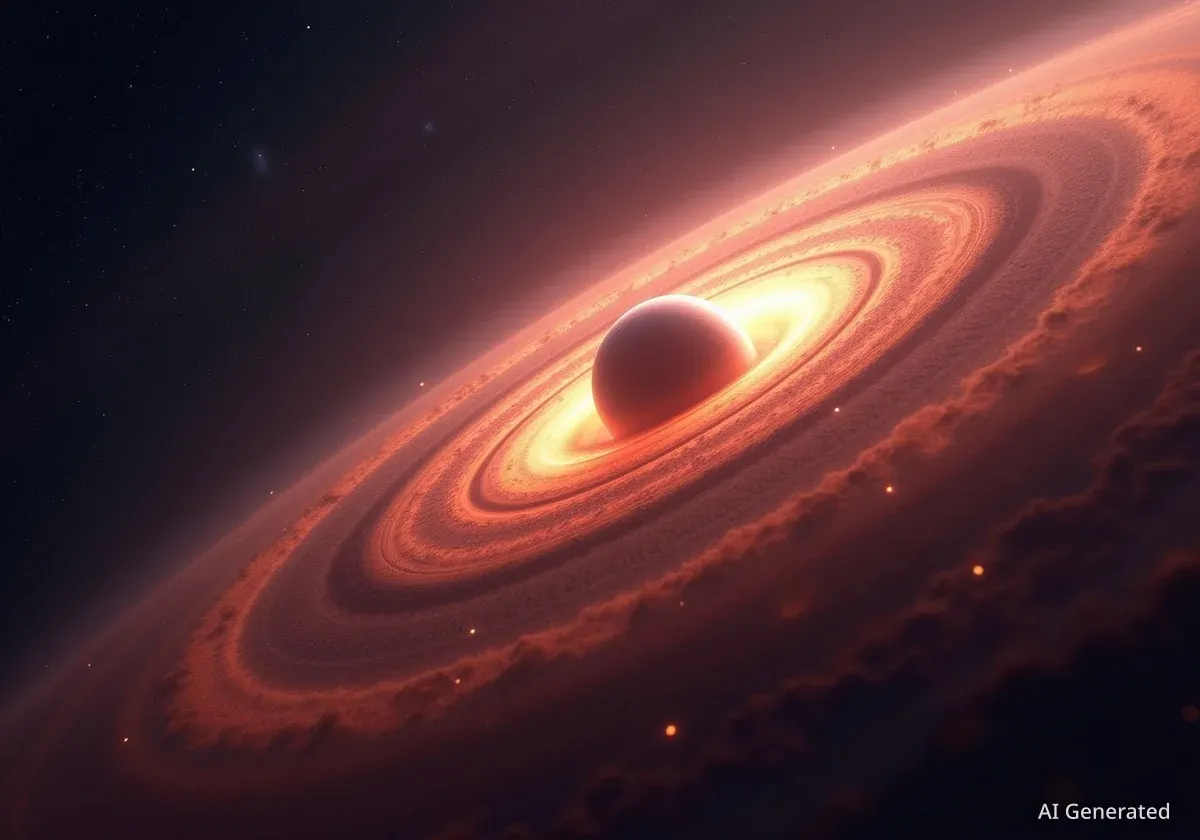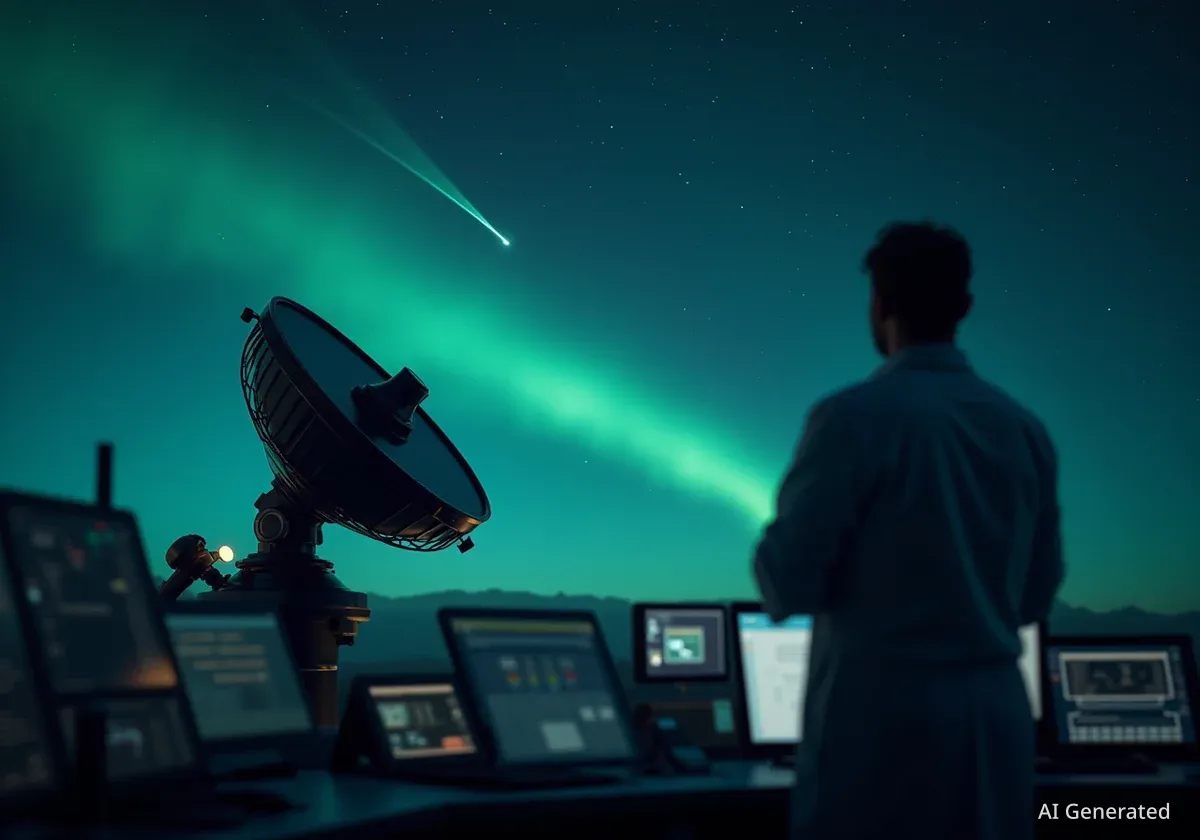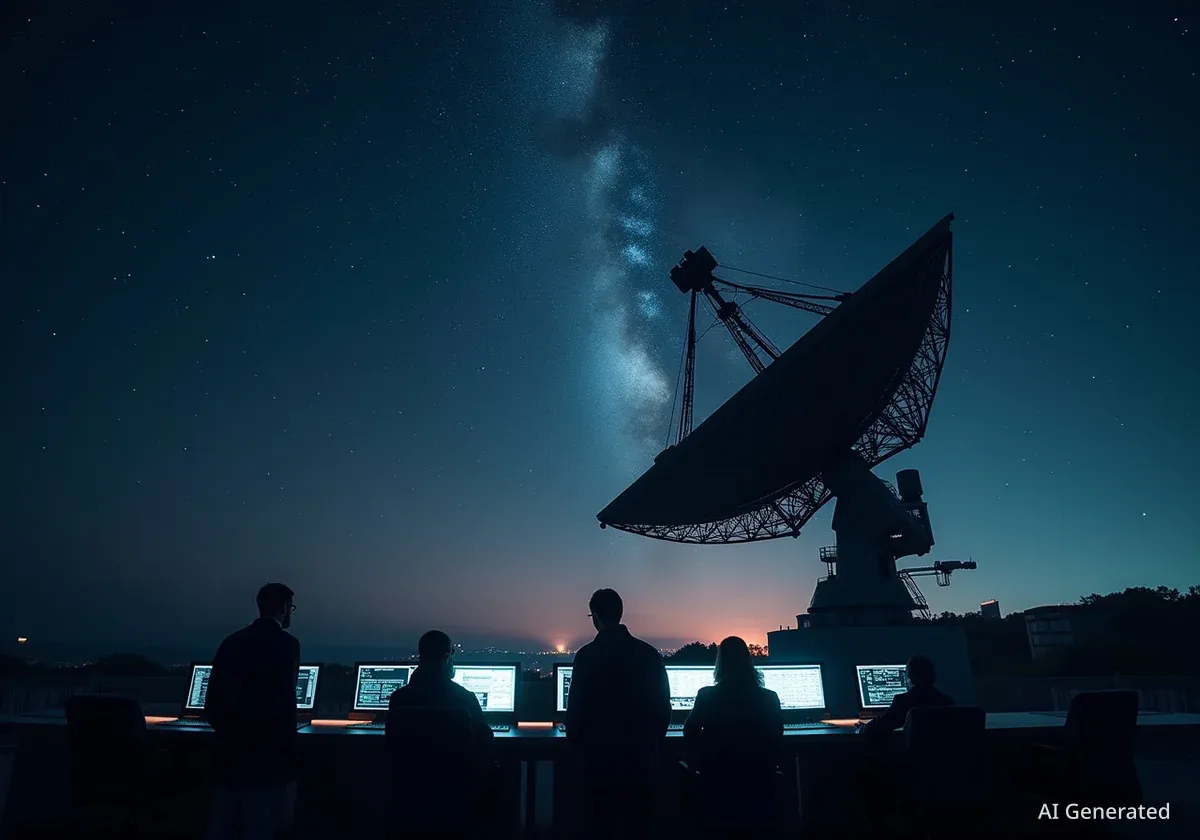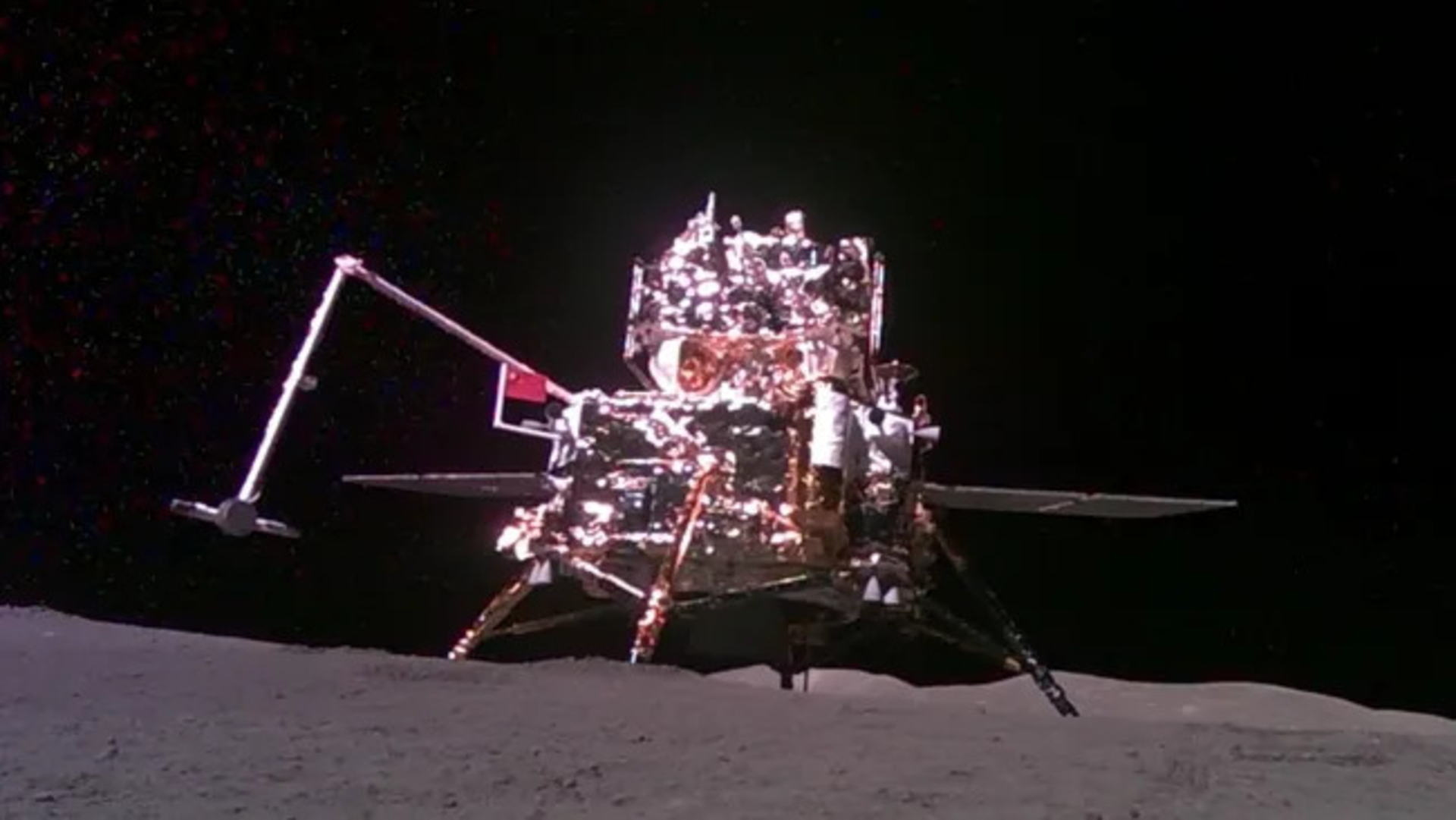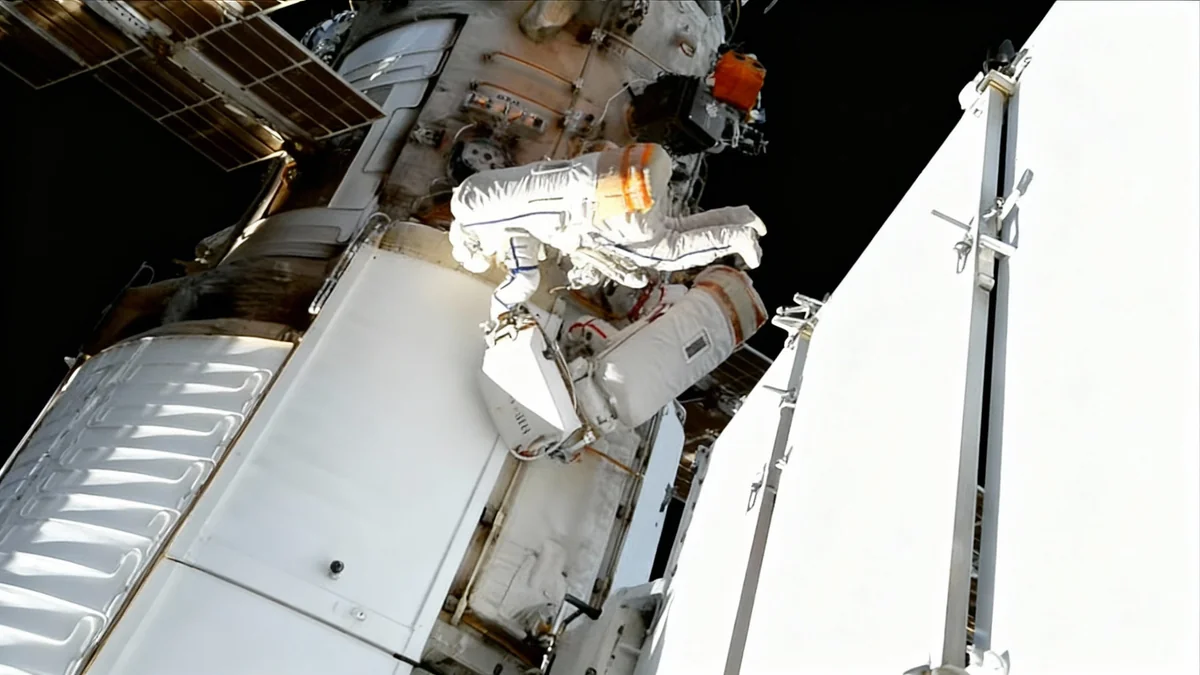Astronomers have achieved a significant milestone, capturing direct images of a nascent exoplanet actively forming within its stellar dust ring. This observation provides the first visual evidence of a gas giant shaping its environment as it grows, confirming long-held scientific predictions about planet formation.
Key Takeaways
- Astronomers directly observed a baby exoplanet, WISPIT 2b, forming.
- The planet is a gas giant, estimated to be five times Jupiter's mass.
- It is about five million years old.
- WISPIT 2b is actively clearing a gap in its star's dust disk.
- This confirms a key theory of gas giant formation.
Direct Observation of a Forming Planet
For the first time, scientists have seen a protoplanet in the process of creation. This young planet, named WISPIT 2b, is a gas giant. It is estimated to be approximately five times larger than Jupiter. The planet is also very young, with an age of around five million years.
Observations used the Magellan Telescope in Chile and the Large Binocular Telescope in Arizona. These powerful instruments provided a detailed view of WISPIT 2b. The planet is located within a ring of dust and gas surrounding its parent star, WISPIT 2. It is clearly carving out a gap as it collects material to grow.
"This new image marks the first direct evidence of a growing planet observed within the very ring gap that it's shaping, confirming a longstanding prediction of how gas giants form," according to a statement from NASA.
Planet WISPIT 2b Facts
- Type: Gas Giant
- Mass: Approximately 5 times Jupiter's mass
- Age: Around 5 million years
- Location: Orbiting star WISPIT 2, 437 light-years from Earth
- Key Feature: Actively creating a gap in its protoplanetary disk
The Birthplace of Planets
WISPIT 2b orbits a star located about 437 light-years away from Earth. Young stars are often surrounded by a disk of gas and dust. Scientists call this a "protoplanetary disk." These disks are essentially the nurseries where new planets are born.
It has long been theorized that growing planets create gaps or clearings within these disks. As a planet gathers material, its gravitational pull and orbital motion push dust and gas outwards. This creates a visible ring-shaped void in the disk. The new images of WISPIT 2b provide concrete evidence for this process.
Initial Detection and Confirmation
The first hints of WISPIT 2b's activity came from the European Southern Observatory's Very Large Telescope Spectro-Polarimetric High-contrast Exoplanet REsearch instrument (VLT-SPHERE) in northern Chile. This instrument initially detected ring-like bands and a noticeable gap, suggesting a protoplanet was at work.
Understanding Protoplanetary Disks
Protoplanetary disks are rotating structures of dense gas and dust that surround newly formed stars. They are rich in elements like hydrogen, helium, and heavier elements. Over millions of years, particles within these disks collide and stick together, gradually forming planetesimals. These planetesimals then grow into planets through a process called accretion. The presence of gaps in these disks is a strong indicator of planet formation.
Advanced Imaging Techniques
To confirm the active formation of WISPIT 2b, astronomers used advanced imaging techniques. The Magellan Telescope's MagAO-X extreme adaptive optics system played a crucial role. It detected a faint glow of H-alpha light. This light is a specific spectral fingerprint of hydrogen gas. It indicates that hydrogen gas is heating up as it falls onto the forming planet. This process is called accretion.
Simultaneously, infrared cameras on the Large Binocular Telescope observed WISPIT 2b in the same location. These observations helped confirm that the light emission was indeed from an actively accreting planet. This ruled out other potential sources of light.
In the image released by NASA, WISPIT 2b appears as a small purple dot. It is positioned to the right of a bright white dust ring that encircles its parent star. A second, fainter white ring is also visible further out from the planet. This visual representation highlights the planet's influence on its immediate stellar environment.
Shaping its Environment
The location of WISPIT 2b within the disk's gap is significant. It suggests the planet is not just moving through the disk. Instead, it is actively shaping its surroundings. It is sweeping up material and pushing dust aside as it grows larger. This process is fundamental to the formation of gas giants.
Astronomers even identified a faint second source in another, inner ring gap. This observation raises the possibility of a sibling world also forming within the same star system. Such a discovery would offer even more insights into how multiple planets can emerge from a single protoplanetary disk.
The findings from the MagAO-X system were published in The Astrophysical Journal Letters on August 26. A related study using observations from the VLT-SPHERE instrument was published on the same day. These combined studies provide a comprehensive view of this unique planetary birth.
Key Instruments Used
- Magellan Telescope (Chile): Used MagAO-X extreme adaptive optics to detect H-alpha light.
- Large Binocular Telescope (Arizona): Used infrared cameras to confirm emissions.
- VLT-SPHERE (Chile): Initially detected ring structures and gaps.
Future Implications for Planet Studies
This direct observation of WISPIT 2b provides invaluable data for planetary scientists. It helps them better understand the complex processes involved in gas giant formation. It also offers a clearer picture of how planets interact with their surrounding disks. These insights will refine current models of planet formation. They may also aid in the search for other young, developing exoplanets.
Studying systems like WISPIT 2 offers a window into our own solar system's past. Our gas giants, Jupiter and Saturn, likely formed through similar processes billions of years ago. Understanding WISPIT 2b's growth could reveal more about the early days of Earth and its planetary neighbors.
The ongoing research promises to uncover more details about this fascinating cosmic event. Continued monitoring of WISPIT 2b and similar systems will help astronomers piece together the intricate puzzle of how planets come into existence.

